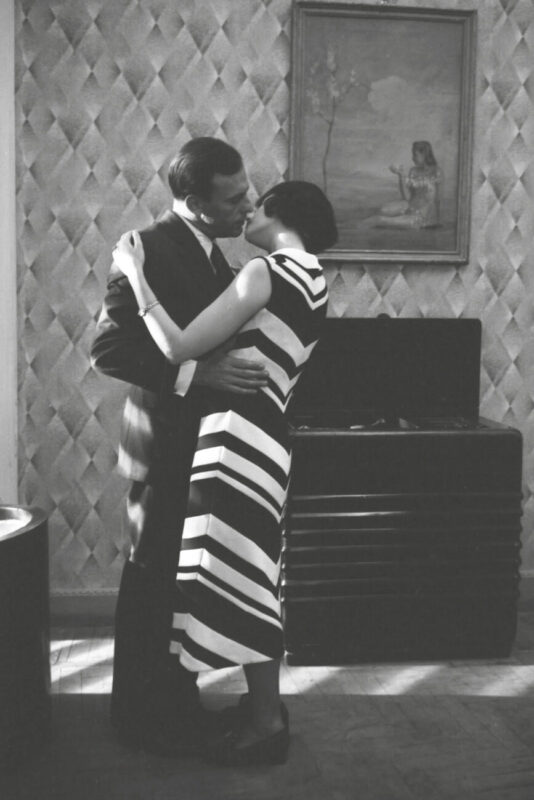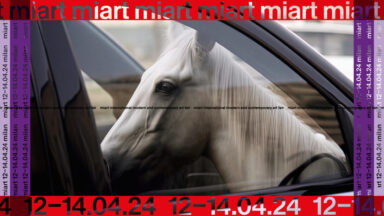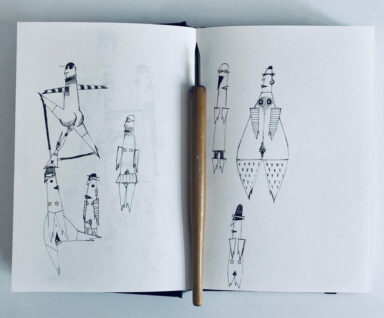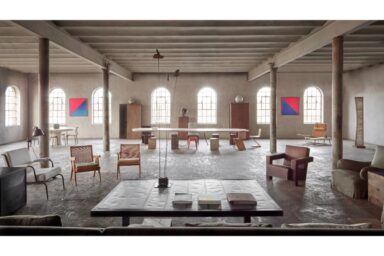TO SEE THE COSTUMES OF FILM CHARACTERS FROM LIFE MAKES PEOPLE MOVE AS IF IN FRONT OF A RELIC – INTERVIEW WITH CLARA TOSI PAMPHILI
Text by Fiammetta Cesana
A fairytale, possible only in Rome, wonderfully intertwines fashion, costume and cinema. The city of art and style par excellence presents ‘Romaison’, the ongoing exhibition that aims to become an extended museum to preserve and promote the incredible work of tailoring and costume studios. Between archives and production, these mythical ateliers preserve invaluable pieces, combining historical cinematographic findings with new high fashion experiments. Unique dresses tell us about the heroes of today’s cinema back to 1937, when the need to rebuild life and beauty from the world conflict’s ruins led to the birth of Cinema Factory, which ended to spread its magic all over the globe… what better example offered by modern history to reinvent ourselves in contemporary dark times?
So we listened to the voice of the main narrator, of who made possible the tale of these treasures, making them inspiring and trying to prevent their fall into obsolete professionalism. Clara Tosi Pamphili, Romaison’s curator, is well aware of the fundamental sharing between past and present, especially when it comes to fashion, and she hopes that, as it happened with food, films can also show the coolness of sartorial work to the eyes of the new generations.

Fiammetta Cesana: Dear Clara, thank you for being with us, although remotely. As supporters of the miscellaneous beauty linking fashion with art, Romaison attracted us like bees to honey. What made you wish to open the most important costume studios in the city to the public?
Clara Tosi Pamphili: I had already curated exhibition on these studios, experiencing how much fascination is exerted on the public to see the costumes of film characters from life. What was part of a collective imagination, of an unreal aspect of life, became true and people were moved as if in front of a relic. The clothes of their divas or their heroes are proof that there is something true, they are proof of a materialized fantasy.
It made me wish this project the gaze of an audience that goes from the child to the elderly, from the expert to the person who doesn’t remember the title but has seen that film many times… the strength of the handmade product which, unlike the artistic one, doesn’t make selections but brings everyone closer.
Added to that, was the discovery of the other archives, besides those of their productions, those of authentic clothes that each of these tailors has. Thousands of clothes that are not even found in museums, from Worth to Poiret, Balenciaga, Dior, Gallenga, Versace… a collection that has fueled every production of costume designers and tailors. Inspirations but sometimes also the possibility of using an authentic piece that now could no longer be done.
So the exhibition tells this, the masterpieces carrying the Oscars to Made in Italy, but also the culture of the Archive.
How do past and present coexist in a fashion lab today?
The present and the past are not alternatives indeed, some techniques have been replaced but only to speed up and optimize times or overcome distances. Body scanning allows you to design remotely, visualizing tests and choices but the execution is still preciously manual. In these tailors there are still cutting and modeling rules, realization of effects such as pleating that are done only in Haute Couture, and it is for this reason that the houses often collaborate with these costume studios. The past is the archetype that illuminates the present, the memory of doing not only technically but also as research and study, which is still a current method. Unfortunately, there are few young people who can guarantee a generational change.
Roman tailors, since their birth, have attracted national but also foreign productions, from Henry King’s ‘The Prince of the Foxes’ in 1949, to Fellini’s ‘La Dolce Vita’, up to achieving the praises for impeccable work from Steven Spielberg. Why manual skills, even that of such prestige, no longer attracts young people, sadly getting lost as a form of art?
It is slow work, young people have a wrong relationship with time, they don’t even have the patience to type a whole word on the keyboard… I think this is the main problem, the time to learn from a master, the time to choose and elaborate. In tailoring there are slow points, to make a men’s suit in London as in Naples it takes a lot of tests. Then there is the problem of the scarce consideration of the craftsman’s role, in fashion they are still all fashion-designers or stylists, few aspire to tailoring as a profession. It’d take a few films, such as those made about food, to make the craft of tailoring become as cool as that of cooking.

Two very different wars, the world one, that saw the birth of Cinecittà, and the one we are experiencing today. Do you think, however, that the pandemic devastation could lead, as it happened in the past, to new creative figures and art experiments and, perhaps, even to the revaluation of craftsmanship?
The excess of digitization brought by the pandemic isolation will lead to an added value of craftsmanship. The possibility of rediscovering the use of the senses, when it returns, will find us craving for touch, smell, and craftsmanship will be the real luxury, definitively.
After the Second World War there was a real reconstruction, even of role models, but the creative fortune of that time, which we still live on, was based on the people’s ability to know how to reinvent themselves and Rome was the center of a new world thanks to the Fabbrica del Cinema. The current devastation is different, much more complex in many aspects, but the solution is always to reinvent ourselves. Today the Gucci FilmFest comes out, many brands are experimenting with new means to reach the public and this inevitably also affects the style. All the technological changes have changed the style from the moon landing to the advent of color on the screen.
In the program of the exhibition project there is also a performance, that of Tilda Swinton, this year winner of the Golden Lion, directed by Olivier Saillard, with costumes from Pier Paolo Pasolini’s film. What does ‘Embodying Pasolini’ mean for the goals you want to build with Romaison?
That’s the other part of a heart now working halfway: the performance is the representation of the theory configured by the exhibition. The actress, the curator, fashion, cinema, Rome, Pier Paolo Pasolini are the ingredients of a phenomenon that can only be generated here in Rome where the value of fashion cannot be separated from that of costume. So the goal is to go beyond the dimension of magnificent scenery but show the unique creative history of this city, and Pasolini is the most effective synthesis of this transversality. Romaison understands Rome as a great maison where collections and events are created.
We were glad to know that despite the restrictions of the new decree, you are still able to carry on Romaison, moving it from the Ara Pacis museum to online platforms with a series of interventions between costume designers, journalists and leading fashion figures…
This is also a process of reinvention, of changing means to reach places and people who can no longer see it live. Fortunately, the exhibition offers many elements of in-depth analysis so it breaks down into many situations, autonomous and valid, with important and international protagonists: costume and fashion designers, journalists, experts in sectors such as fashion or cinema. Paradoxically, we reach unimaginable ‘visitors’ in presence. However, no special effects or 3D projection can replace the thrill of seeing these places and their extraordinary archive material from life.
Today, Thursday 19 November, Clara Tosi Pamphili will speak with one of the leading figures in Italian fashion publishing on the mutual influence between fashion and costume design.
From this Monday the ‘Encounters’ cycle began, which sees talks by Gabriella Pescucci, award-winning costume designer with an Oscar for the film ‘The Age of Innocence’, Gabriele Mayer, owner of the homonymous archive of sketches and drawings, just donated to the Galleria Nazionale, Carlo Poggioli, costume designer who has signed over 60 film productions, recently collaborating mainly with Paolo Sorrentino.
To know more about next appointments, visit: ROMAISON 2020, Museo dell’Ara Pacis







